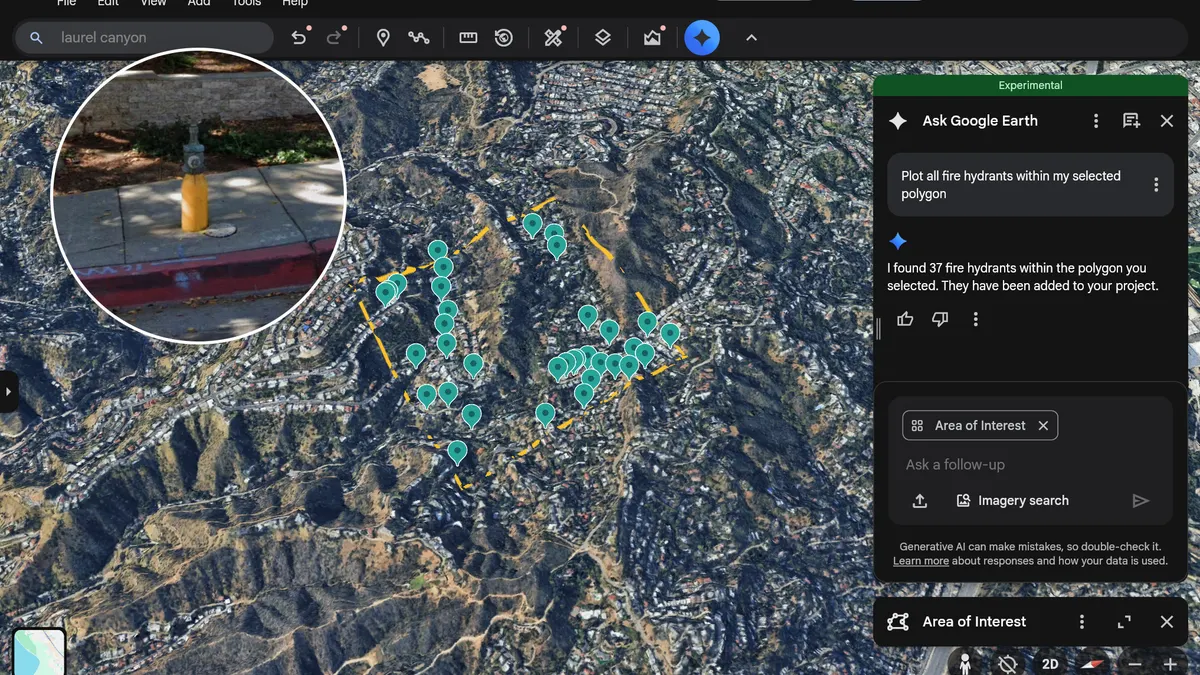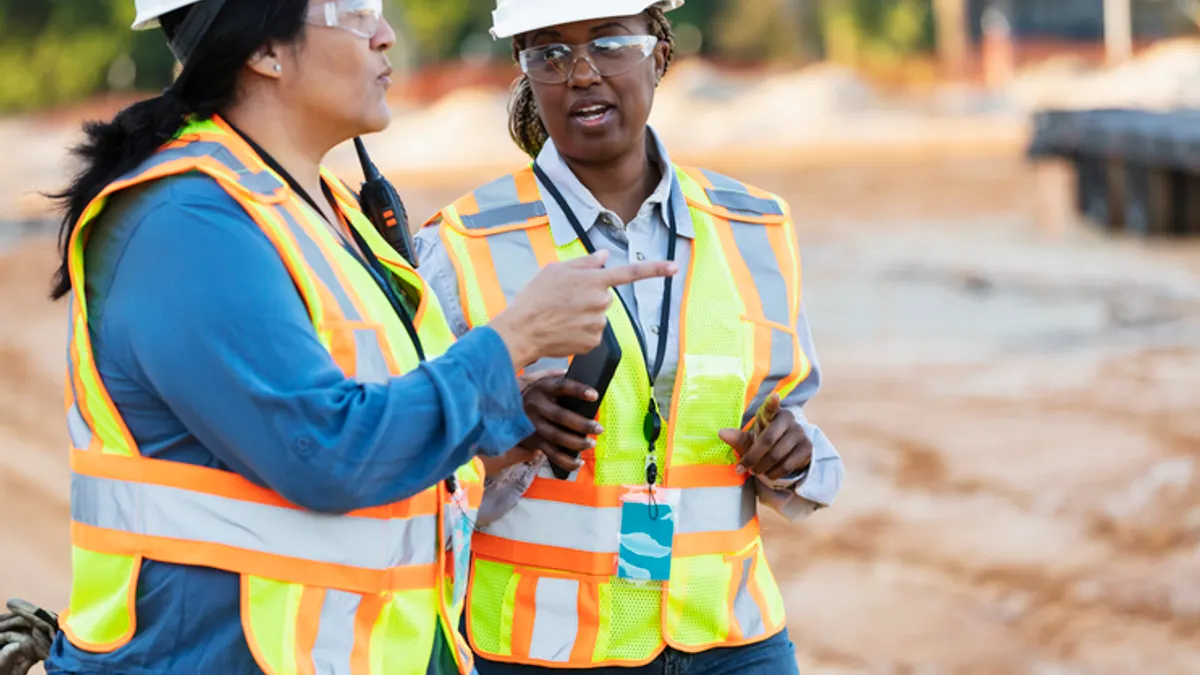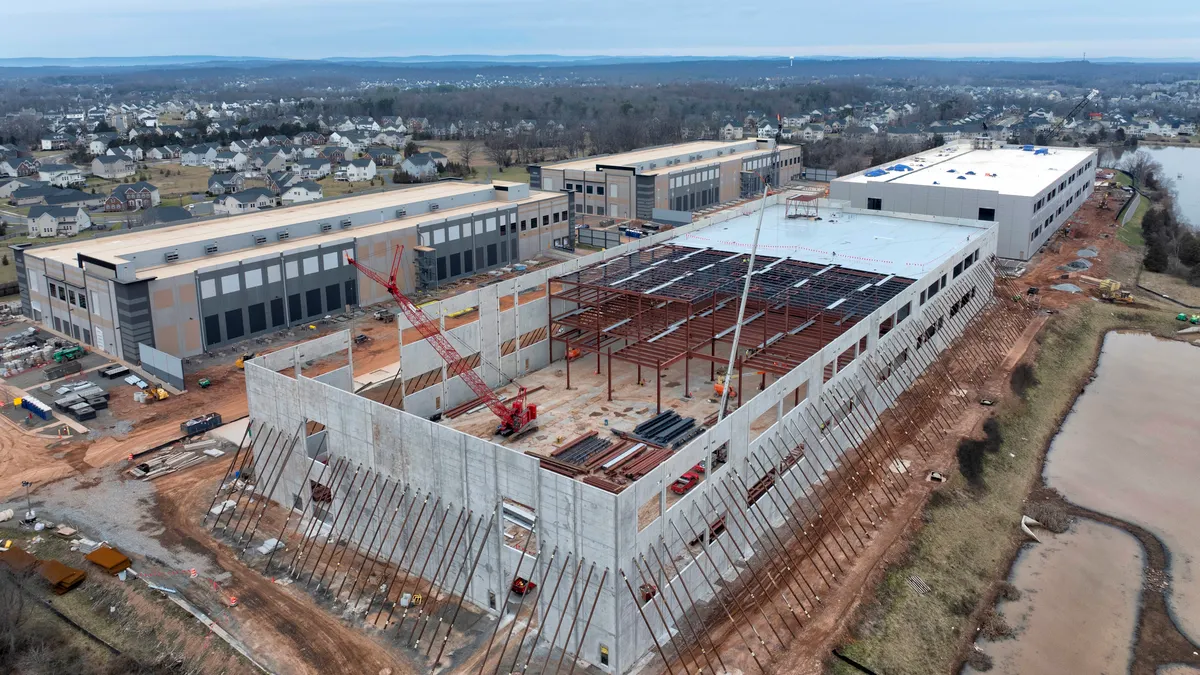Last month's labor report from the Associated General Contractors and Autodesk painted a glum picture: 80% of the 2,500 surveyed construction firms — regardless of size — reported difficulty finding qualified hourly craft labor.
As construction continues to expand in many areas, these labor pains are only expected to grow, with 81% of firms surveyed indicating that the difficulty filling positions will only continue or intensify.
The industry isn't idly standing by waiting for a panacea, though. Groups throughout the country are taking active steps to educate students, teachers and parents about the value of construction careers, as well as working with legislators to get more funding to bring awareness and programs back in to schools.
Oregon, Virginia promote craft through education
In a webinar announcing the results of the study, Yohn Baldwin, president of Baldwin General Contracting Inc. in Albany, Oregon, and chair of the AGC Oregon workforce and professional development council, discussed the success his AGC chapter has had in workforce development.
The chapter, which has two staff members dedicated to the issue, saw great success with a media outreach campaign that shared links to the revamped BuildOregon website, which originally launched in 2014 and targets younger demographics with information about construction careers and job openings. Through Twitter, Facebook and other social media channels, the site has received tens of thousands of hits during the past three months.
“Social media isn’t something a lot of us are as familiar with, but young people spend a lot of time there,” he said.
Baldwin also was instrumental in creating the Oregon Construction Workforce Coalition several years ago, which brings associations and organizations together to share resources and ideas as well as craft new strategies and objectives regarding the labor shortage.
Steve Malaney, president of P&C Construction in Portland, Oregon, detailed during the call how the association's local chapter has worked with legislators over the past four to six years, seeing $10 million to $20 million in state funds allocated to career and technical education (CTE) programs. These funds, he said, have allowed schools to re-introduce shop classes and vocational-technical (vo-tech) programs.
The state legislature passed Measure 98 in 2016, which further supported programs and provided a tenfold increase in funding compared to just a few years prior. During the 2017-2018 school year, 255 school districts and charter schools throughout Oregon received the first allocation of the $170 million fund.
Meanwhile, the Virginia AGC has been focusing on workforce development as well. Robert W. Lee, director of preconstruction services at English Construction and chairman of the AGC of Virginia, said the chapter works with other associations and groups and has formed a nonprofit that uses the marketing arm of NCCER to launch Build Your Future Virginia, which serves students, teachers, parents, and the under- and unemployed as a hub to explore the trades, find training and connect with employers.
AGCVA is also working with the Virginia Department of Education, The Virginia Department of Labor and Industry and the Governor's Office, as well as collaborating with community colleges to offer more skilled trade classes and win grants for updated equipment and more technical centers. "We work hand-in-hand with our secondary schools through cross-pollinating with various school administration and associations," Lee told Construction Dive. "We are currently implementing a framework that keeps our members engaged with local schools and CTE centers on a year-round basis."
“Our greatest success has been where we’ve pushed workforce development down to our local groups across the state and through working directly with middle and high school CTE programs and directors,” he said.
After AGCVA supported Tiny House projects across the state, for example, it saw enrollment in CTE courses double. In an effort to reach students beyond those already engaged in the skilled trades, the group also is reaching out in standard academic classes by showing math students how algebra and geometry can be used in the industry and by putting technical proposals in front of English students.
"This unique and consistent involvement in secondary classes has opened a path to hiring students directly out of school," Lee said. "Collaboration with the Department of Labor and Industry to implement youth registered apprenticeship programs has resulted in our members hiring students while still in high school, allowing students to graduate employed and with hours of apprenticeship requirements already fulfilled. All of this is directly adding to our workforce.
"Our success has become tangible as we tap into the direct pipelines of potential employees, and it is being felt through the increasing support of our state agencies," he added. "This problem was created over a long period of time and it will not be fixed overnight, but we are up to the challenge."
Although the association has been successful so far, Lee says there’s a need for even greater success because, "[society has] done a great job over the years of convincing every parent and educator that you have to go to college to have a good life and profession and that's just not true. Construction does have innovative programs. You can have a successful job and not be in debt after four years of college."
Educating the educators
Although the Oregon Construction Workforce Coalition participated in student career days, it realized talking with students stopping by its booth for a few minutes wasn't enough, Malaney said in the webinar. So the group developed the Educator Externship, a program where teachers get a stipend to spend two weeks learning about construction. At the end of the training, teachers can either write a lesson plan for four professional development credits or create a unit plan for four graduate credits at Western Oregon or Eastern Oregon University.
The program begins with safety training and then the teachers go on to jobsite tours. Participants have conversations with subcontractors, general, building and highway contractors, and suppliers. Throughout the two weeks, they gain exposure to construction office and accounting practices, apprenticeship programs and get insight into the role of project managers and supervisors.
"Our goal was to make teachers a champion for the industry," Malaney said.
Twelve teachers participated in 2016, which was the first year for the program. This past July saw participation from 70 teachers, counselors and even a principal in five locations, and Malaney says there’s already a sizable queue of educators vying for next year's externship.
Investing in the local workforce
Dan Gilbane, senior vice president of the southwest division of Gilbane Building Co. in Houston, has seen firsthand the effects of the labor shortage. "Houston has great jobs but not enough people," he said in the webinar, "but that's not unique to just Houston or construction. It's present in all industries today. AGC's study is a great reminder we need to double down efforts to solve the technical skills gap."
UpSkill Houston is one program attempting to bridge the gap. The industry-led collaboration was launched four years ago to create solutions to attract and train people in career options that don’t necessarily involve a four-year degree. Gilbane spoke of the need to provide leadership that will invest and partner in finding solutions, engaging policymakers and adapting the workforce to meet changing construction demands.
"We have to treat workforce development as an investment in people that will ensure competitiveness of companies and the region," he said. "Providing clear career paths for people is a key part of that."
Construction Career Collaborative (C3) is a nonprofit alliance of building owners and general and specialty contractors whose goal is to create a safe, skilled and sustainable craft workforce in the greater Houston region, and works closely with UpSkill Houston.
Chuck Gremillion, the group's executive director and a member of UpSkill's executive committee, said that C3 members, including architects, general contractors, specialty contractors and owners, feel as though they are paying for workforce problems with lesser quality projects. He believes one reason it's so hard to attract new workers is because companies shifted to using independent subcontractors and therefore don't invest as much in training employees. "The ultimate objective is to create a safe, skilled and sustainable workforce," Gremillion told Construction Dive, "but to do that we have to pour a foundation first," which includes proper pay, benefits, safety and training.
"If we do these things, then a young person will recognize there's a career path in construction and they can make a healthy living," he said. "The industry has perceptions of being dirty and dangerous and part of what we're trying to do is change that perception." By next spring, Gremillion hopes to have C3's first craft trade fair, which will be funded in part from a grant C3 recently won.
Gremillion also agrees with Gilbane that tech is what will attract young people to the industry. "Going forward, tech is what will interest young people out of high school," he said.


















